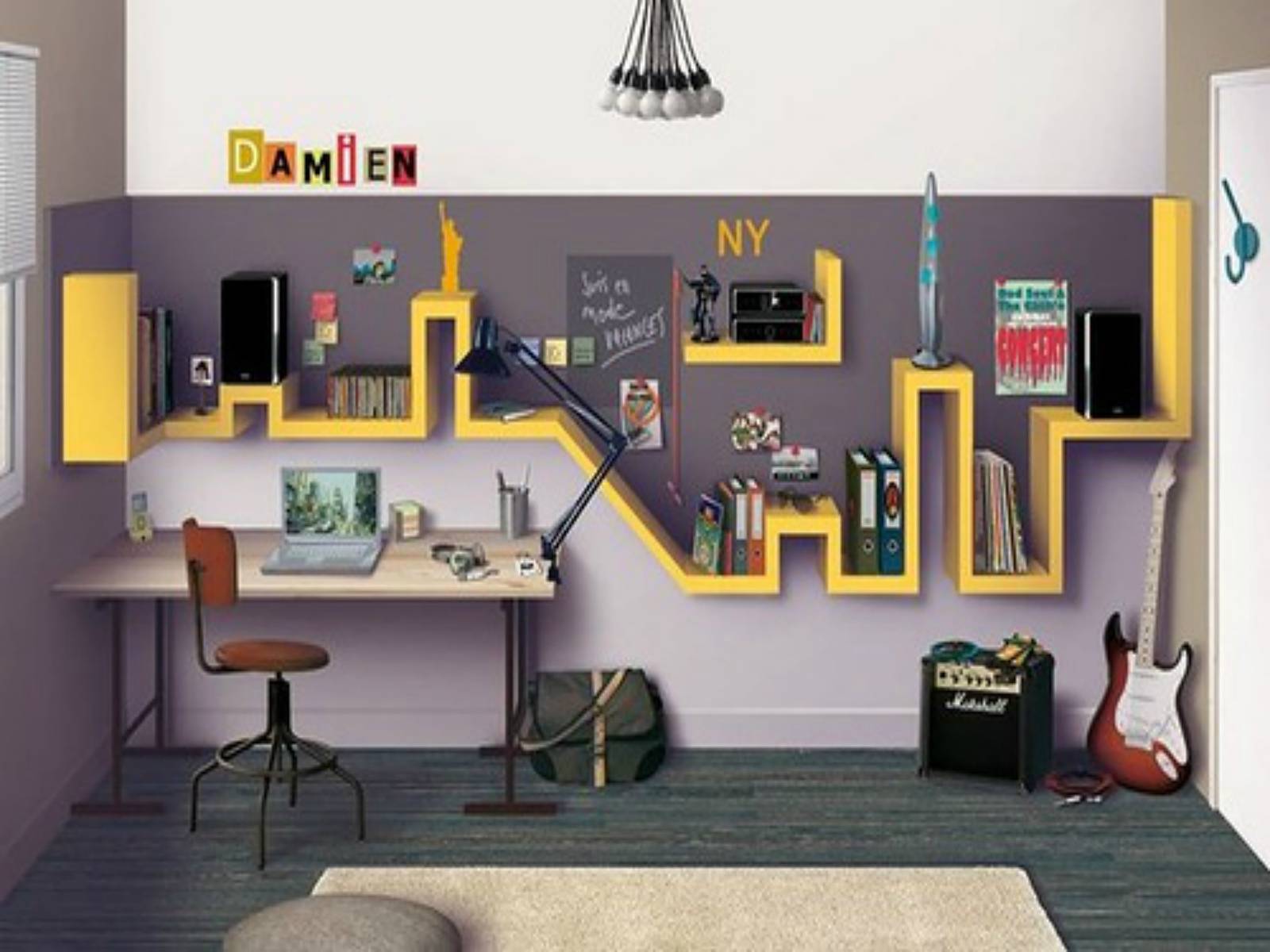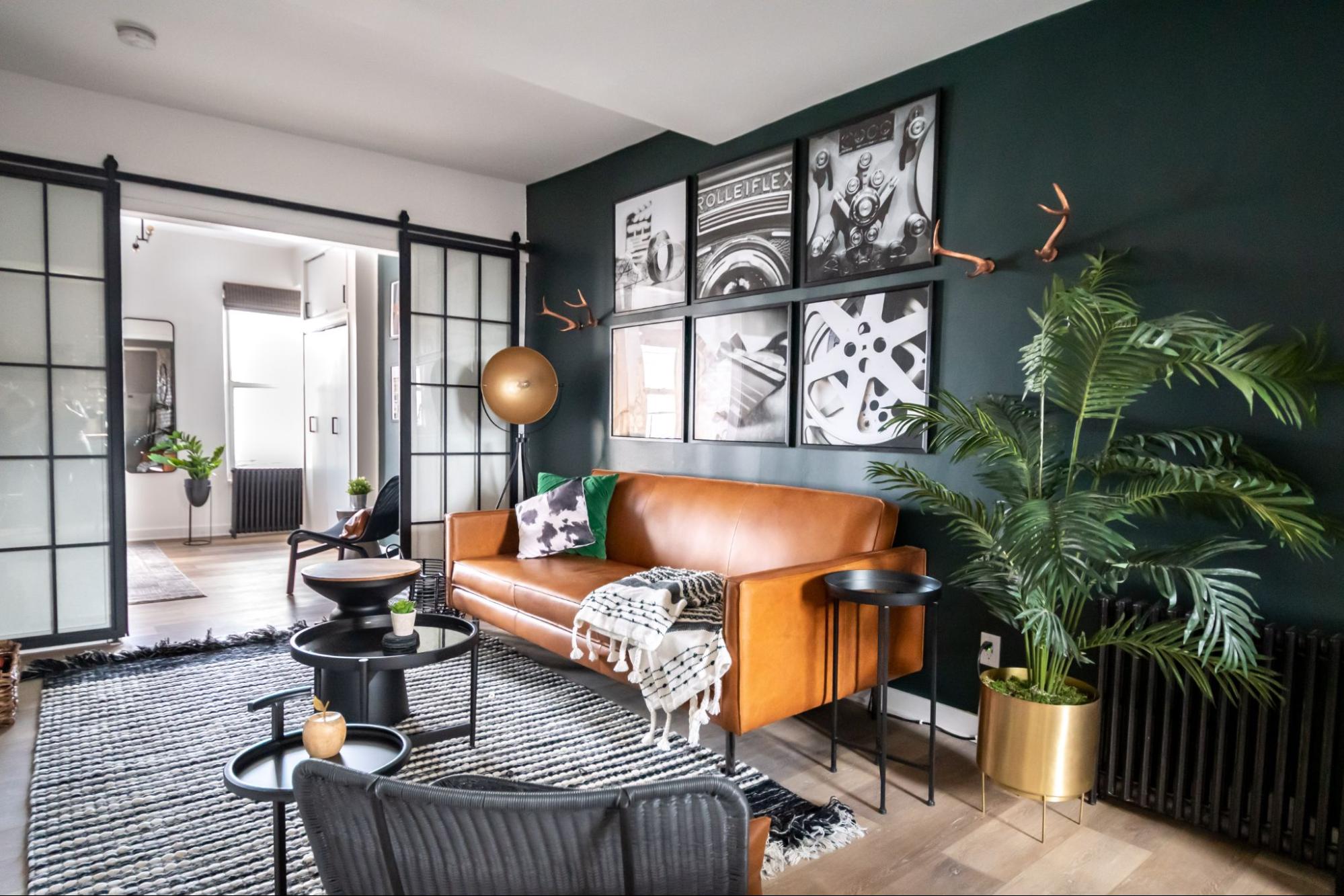Design Elements and Principles

Creative interior design – The essence of interior design lies in the skillful orchestration of elements and principles to create spaces that are both visually captivating and functionally sound. These elements, namely line, shape, color, texture, and pattern, form the building blocks of any design scheme, while principles like balance, contrast, emphasis, and unity provide the guiding framework for their harmonious arrangement.
In the realm of creative interior design, where aesthetics and functionality converge, the concept of sustainability has emerged as an integral element. By incorporating sustainable interior design principles, designers can create spaces that not only enhance the well-being of occupants but also minimize environmental impact.
From the use of eco-friendly materials to energy-efficient lighting and space optimization, sustainability in interior design is transforming the way we live and interact with our surroundings.
Color Theory
Color holds immense sway in interior design, evoking emotions, setting moods, and influencing spatial perception. The color wheel serves as a valuable tool, categorizing colors into primary, secondary, and tertiary hues. Understanding color relationships, such as complementary, analogous, and monochromatic schemes, enables designers to create harmonious and visually stimulating environments.
Texture
Texture adds depth and dimension to interior spaces, engaging both the visual and tactile senses. From smooth and polished surfaces to rough and textured fabrics, each texture conveys a distinct character. Combining contrasting textures, such as plush velvet with crisp linen, creates visual interest and adds a layer of complexity to the design.
Lighting
Lighting plays a pivotal role in interior design, shaping the ambiance and functionality of a space. Natural light, when harnessed effectively, can create a sense of openness and connection with the outdoors. Artificial lighting, through the strategic placement of fixtures and the use of different light sources, can enhance specific areas, create focal points, and evoke desired moods.
Scale, Proportion, and Balance
Achieving a harmonious interior design requires careful consideration of scale, proportion, and balance. Scale refers to the size of objects relative to each other and to the overall space, while proportion involves the relationship between different elements. Balance, on the other hand, ensures that the visual weight of elements is evenly distributed, creating a sense of stability and cohesion.
Creative interior design goes beyond mere aesthetics; it’s about creating spaces that resonate with our senses and emotions. If you’re looking for inspiration, RH Interior Design offers a curated collection of furniture, lighting, and accessories that will elevate your home’s ambiance.
From classic to contemporary styles, RH’s designs seamlessly blend comfort and sophistication, reminding us that creative interior design is not just about appearances but about creating spaces that nurture our well-being.
Creative Techniques and Approaches: Creative Interior Design

Innovative techniques and approaches play a pivotal role in creating captivating and distinctive interior designs. These methods empower designers to transcend conventional boundaries and explore fresh avenues of expression.
Mood boards, sketches, and 3D modeling serve as invaluable tools in the design process. Mood boards, a collage of images, materials, and colors, provide a visual representation of the desired ambiance and aesthetic direction. Sketches allow designers to experiment with different layouts and spatial arrangements, while 3D modeling offers a realistic preview of the finished space.
Unconventional Materials, Textures, and Patterns
Creative interior design often involves the integration of unconventional materials, textures, and patterns. These elements add depth, character, and a touch of the unexpected to a space. Natural materials such as stone, wood, and leather bring a sense of warmth and organic beauty, while metallic accents and geometric patterns create a modern and sophisticated ambiance. By juxtaposing different textures and patterns, designers can create visual interest and dynamic spaces that stimulate the senses.
Emerging Trends and Future Directions

The realm of interior design is constantly evolving, with emerging trends and future directions shaping the way we live and interact with our surroundings. These trends are influenced by advancements in technology, sustainability, and cultural diversity, leading to innovative approaches and groundbreaking design concepts.
Influence of Technology, Creative interior design
Technology has become an integral part of interior design, offering unprecedented possibilities for customization, convenience, and efficiency. Smart home integration allows for seamless control of lighting, temperature, and other home systems, creating a truly personalized living environment. Virtual reality (VR) and augmented reality (AR) are also gaining traction, enabling designers to create immersive experiences and showcase design concepts in a realistic and engaging way.
- Smart lighting systems can adjust brightness, color, and temperature based on time of day, mood, or activity.
- Smart thermostats can learn occupants’ preferences and automatically adjust temperature settings for optimal comfort and energy efficiency.
- VR and AR allow designers to create virtual walkthroughs of design concepts, enabling clients to experience their future space before it’s built.
Sustainability and Environmental Consciousness
Sustainability has become a key consideration in interior design, with an increasing focus on eco-friendly materials and practices. Designers are incorporating natural and renewable resources, such as bamboo, cork, and recycled materials, into their designs. Energy-efficient appliances and lighting systems are also being prioritized, reducing environmental impact and promoting a healthier living environment.
- Bamboo flooring is a sustainable alternative to traditional hardwood, offering durability and a unique aesthetic.
- Cork tiles are made from the bark of cork oak trees, providing excellent insulation and sound absorption properties.
- Energy-efficient LED lighting consumes less energy and lasts longer than traditional incandescent bulbs.
Cultural Diversity and Global Influences
Cultural diversity is playing a significant role in shaping interior design trends, as designers draw inspiration from different cultures and incorporate global influences into their work. This can be seen in the use of traditional patterns, textiles, and artwork, as well as the blending of different design styles to create eclectic and unique spaces.
- Moroccan tilework adds a touch of exotic flair to bathrooms and kitchens.
- Japanese minimalism influences the use of clean lines, natural materials, and a focus on functionality.
- Scandinavian design emphasizes simplicity, comfort, and the use of light colors and natural textures.